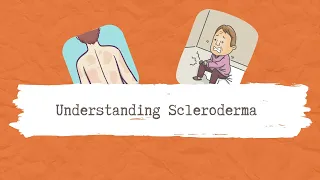What is scleroderma?
Being newly diagnosed with scleroderma can bring a lot of questions. You might be wondering what it means for you and how it will affect your life going forward. You're not alone and many people feel this way at first.
Scleroderma is an autoimmune condition, which means your immune system is attacking your body’s own tissues by mistake. It affects the connective tissues that support your joints, muscles, blood vessels, skin and internal organs. Too much collagen builds up in these areas, causing hardening and tightening that can lead to a range of symptoms.
Learning about your condition is an important first step in managing it, and we’re here to support you and your whānau as you begin that journey.
What are the symptoms?
Scleroderma symptoms can look different for everyone. Common symptoms include:
- Raynaud’s phenomenon: the fingers or toes turn white, then blue in the cold and then red as blood flows through
- Thickening/hardening of the skin on the hands, arms, and face
- Swelling of hands and feet, especially in the morning
- Thinning of the pads at the fingertips
- Small white chalky lumps under the skin (calcium deposits)
- Indigestion or heartburn
- Diarrhoea or constipation
- Shortness of breath
- Kidney problems and high blood pressure
How is it diagnosed?
There is no single test that confirms scleroderma, which can make diagnosis feel like a long process. Your health team may have used a range of tools to reach your diagnosis, including:
- Talking through your medical history
- A physical examination
- Blood tests and imaging such as X-rays or scans
- Breathing and heart function tests
- A skin biopsy
It’s okay if you're still processing all this information. Take your time and don’t hesitate to ask questions or reach out for support.
How you can help yourself manage scleroderma
While there’s no cure yet, there are many ways to manage your symptoms and look after your hauora. Making small changes in your daily life can help you feel more comfortable and reduce flare-ups. These include:
- Avoid smoking as this reduces blood flow to the skin
- Manage stress by making sure you get sufficient rest and relaxation and balance work and leisure
- Look after your skin. Avoid strong detergents that can irritate your skin, and keep it clean and moisturised to prevent dryness and infection
- Exercise helps to keep your joints flexible and improve blood flow
- Manage Raynaud’s phenomenon by avoiding exposure to cold and sudden temperature changes. Keep your whole body warm and protect your hands and feet with gloves and warm socks
- A healthy diet helps maintain general health and wellbeing. Frequent small meals may help if you have trouble with swallowing or heartburn
Who gets scleroderma?
The cause is not clear, but it is thought to be a combination of genetic and environmental factors. More women than men are affected and it usually starts between the ages of 25 and 55.
Medical management
Treatments include medications based on managing specific symptoms and preventing complications. Scleroderma symptoms vary from person to person, requiring different treatments for different people.
Key points
- Protect your skin and joints by using gloves, moisturising daily, and avoiding injury or exposure to cold to reduce flares and discomfort
- Treatment is individualised. There’s no one-size-fits-all; your doctor will tailor medications to your specific symptoms and organ involvement
- Scleroderma affects more women than men and usually starts between the ages of 25 to 55 years
More resources
For more information and support group information, visit Scleroderma New Zealand.





